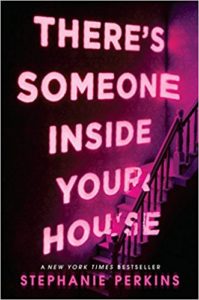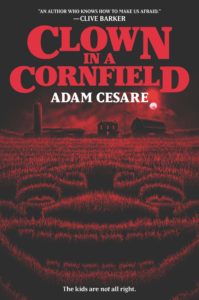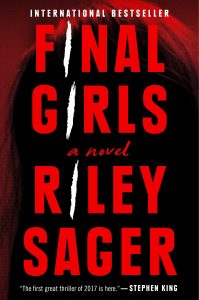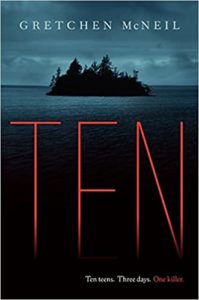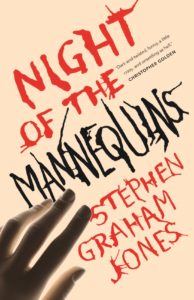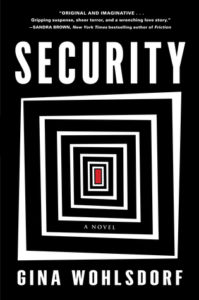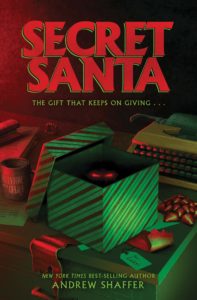Depending upon whom you talk to, slasher movies are either an embarrassment to the horror genre or its very heart. The cliches are many, and in any slasher worth its discount ticket price, they pile up like the body count: Cheap jump-scares. Gallons of fake blood. And, perhaps most importantly, clueless, bumbling protagonists (usually, but not exclusively, teenagers).
Slasher pics rose to prominence in the 1970s with hits such as Black Christmas and Halloween. The eighties saw them dominate the multiplex, before audiences tired of Freddy, Jason, and Chucky. The “dead teenagers” pic was briefly revived in the 90s by Scream, but again fizzled out—there’s only so far you can push the violence before it becomes unintentionally laughable. (Intentional laughs are a story for another time.) Lately, quieter, more “intelligent” horror stories have been all the rage—Hereditary and Get Out featured their fair share of lifeless bodies, but nobody would classify either as a “slasher” film. Slashers are lowbrow (the good ones, at least); slashers revel unapologetically in the blood and guts.
Slasher novels have never been as in vogue as their movie counterparts. The closest they came to mainstream popularity might have been in the 80s, when the ultra-bloody “splatter-punk” genre was pushed by publishers as the next big thing. The graphic subgenre wore out its welcome fairly quickly—despite several million-plus selling books, you might say it was dead on arrival. Movies have an immediate viscerality that books will never have, no matter how hard they try. This isn’t a bad thing, it’s just an acknowledgement that the audience lining up for the latest Friday the 13th installment wasn’t running to the bookstore the next day for their horror fix.
However, something interesting happened over the past couple of decades: all of those movie fans raised on slasher films grew up. A lot of them are readers now, because that’s what us olds do. We aren’t first in line at the theater for the new Purge or Saw flick; that would require staying out way past our bedtimes. Nostalgia is a hell of a drug, though. “As a teenager, I watched ALL the 80s and 90s slasher,” one Goodreads member wrote in a review of one of the books below. Is it any surprise, then, that slasher novels as a category have exploded recently?
Modern slasher novels rely less on over-the-top gore than their 80s counterparts, and are—frequently—targeted at the Young Adult audience. (Understandable, given the slasher genre’s reliance on teenage protagonists.) Modern slasher novels run the gamut from campy to genuinely horrifying, but all owe a debt to the slasher movies that laid the groundwork. Readers have, of course, internalized the movie cliches, whether they know it or not. Some writers subvert these expectations; others play right into them. Here are some of the most notable from the past decade.
There’s Someone Inside Your House by Stephanie Perkins
After reading Perkins’s YA romance Anna and the French Kiss, the last thing I expected was a Scream-style slasher. And I’m guessing her publisher might have felt the same way. But it’s hard to argue with the results—just read the copious CWs (“content warnings”) on Goodreads reviews for There’s Someone Inside Your House. “CW: gore & death.” “CW: several scenes of descriptive gore.” And, perhapst most descriptive: “CW: Murder, gore, violence, hazing, blood, mentions of drugs and suicide.” When it comes to horror, you can’t write a better blurb than that.
Clown In a Cornfield by Adam Cesare
The title says it all. And that cover art—straight-up 1980s Stephen King vibes. It’s not Pennywise meets Children of the Corn, though. Clown In a Cornfield is a straight-up slasher. And, while it might be a YA novel (a marketing term, really), the kills are bloodier than Carrie’s prom night.
Final Girls by Riley Sager
This 2017 thriller launched Sager’s career into the stratosphere. It was lumped in with all of those “missing girl” suspense novels, so horror readers might have overlooked it. Now’s your chance to correct that, though. It’s a fresh take on the “final girl” trope. And if you’re not familiar with “final girls,” the term refers to the sole survivors in slasher movies, who are almost always women. Some argue they’re sexist fantasies; others say they’re feminist AF. Either way, Sager has written one twisty thriller.
Ten by Gretchen McNeil
Ten high schoolers head to a secluded island for a house party…and then they’re killed off, one by one. A YA retelling of Agatha Christie’s And Then There Were None. It was filmed as Ten: Murder Island in 2017, and aired on Lifetime. MURDER. ISLAND. Hell yeah.
Night of the Mannequins by Stephen Graham Jones
This novella from Jones (The Only Good Indians) opens with the following: “So Shanna got a new job at the movie theater, we thought we’d play a fun prank on her, and now most of us are dead, and I’m really starting to feel kind of guilty about it all.” Expect the unexpected. And blood. Also expect blood.
Security by Gina Wohlsdorf
A classic thriller updated and overhauled with modern technology. A killer is on the loose inside a luxury hotel on the California coast, picking off guests one by one. The print edition is enhanced with specially-formatted pages that present the action as if it’s occurring inside a quadrant of security cameras. “There wasn’t much of a plot other than people being murdered,” one reviewer said of the relentless gore. And?
***


